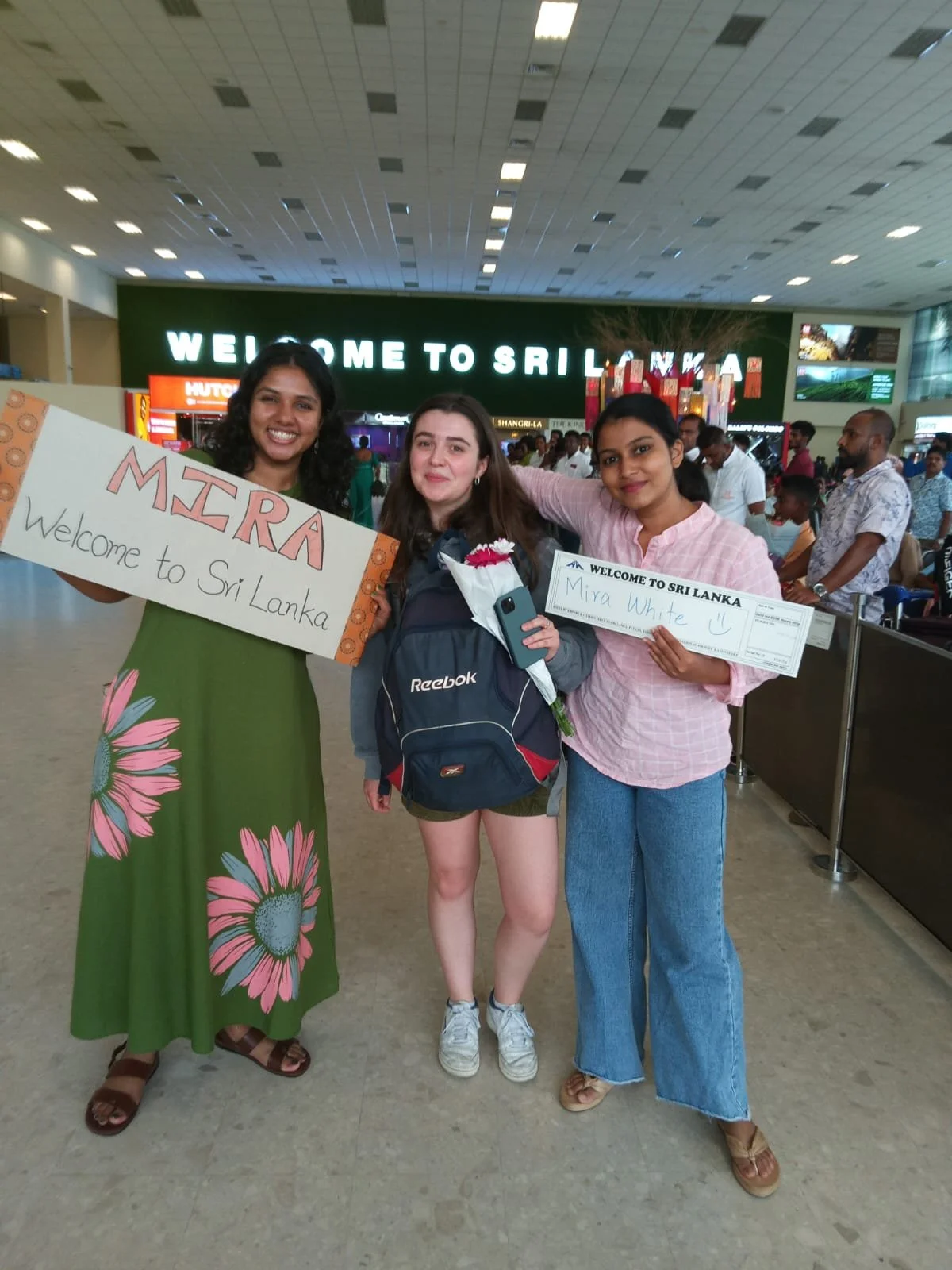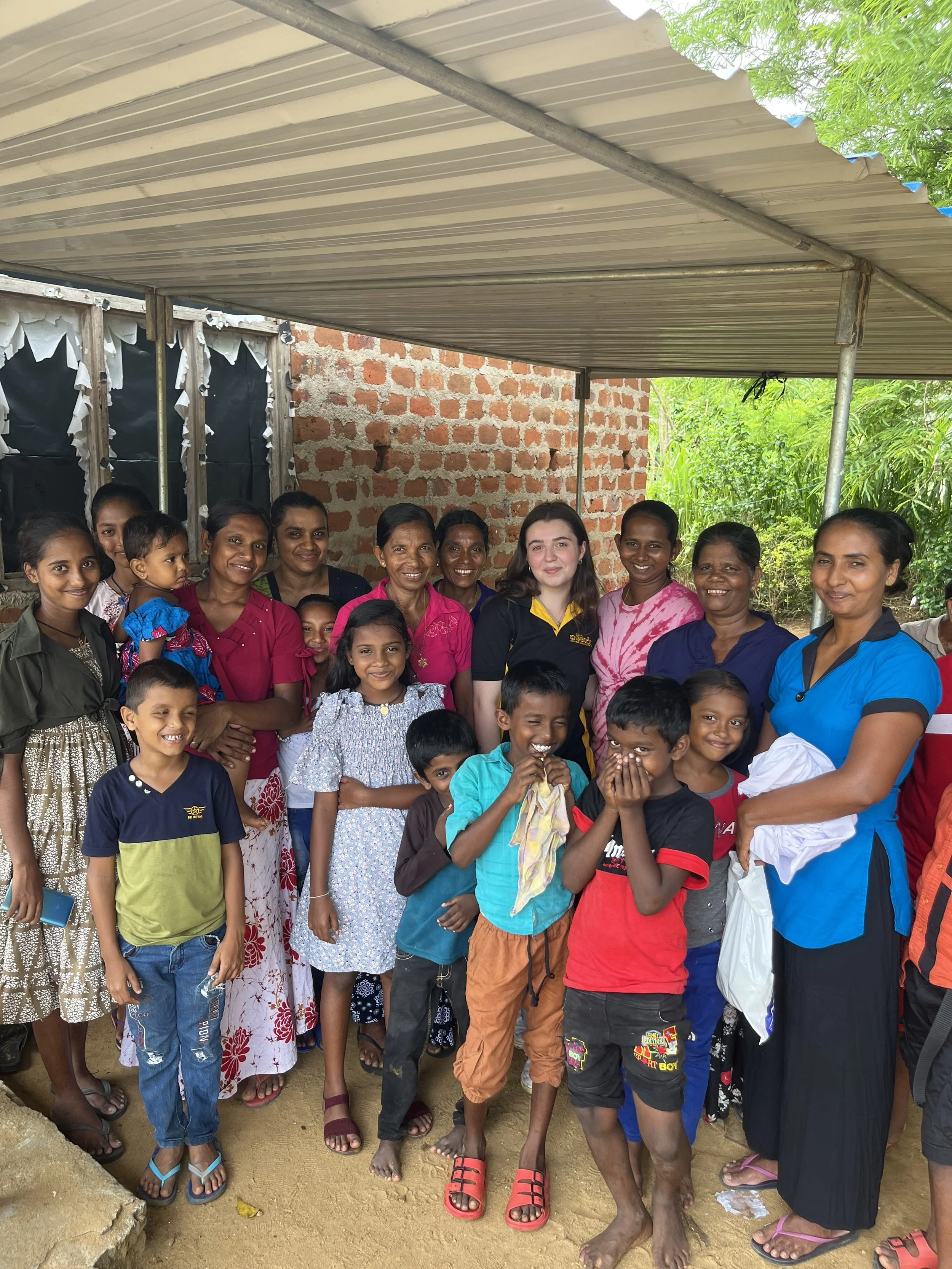With ancient Buddhist temples, stories of independence and deep-rooted traditions, Sri Lanka offers a South Asian experience unlike any other.
View from Elephant Sanctuary. Mira White.
The jewel of the Indian Ocean, Sri Lanka is recognized for its abundance of biodiversity and rich culture. Featuring vast rainforests, idyllic beaches and towering mountain ranges, the island is a hotspot for elephants, pink sand beaches and adventurous travelers. Its extensive history bridges the divide between the past and the present.
Dambulla Cave Temple. Mira White.
Living with a host family in Colombo and working for the Sri Lankan grassroots organization, Gammadda, I was able to experience the authenticity of Sri Lankan local life. Sponsored by Brown University, I interned for Gammadda, a group that prides itself on being an initiative “for the people by the people” while traveling across the country to complete rural development projects. Regardless of whether I was with my host family, at the office or in a remote part of the island, I was continuously exposed to an outstanding variety of new cultures, customs and habits.
My ten weeks living in Sri Lanka presented me with the opportunity to immerse myself in various facets of a culture older than any other I’ve experienced. Surrounded by Sinhala, spiced curry and tuk-tuks, I adapted to a lifestyle consumed by the language barrier, a diet of rice and, often, unpredictable transportation. Despite my unfamiliarity with Sri Lankan customs and traditions, I was always welcomed with kindness and understanding.
I arrived at the end of May, near the end of Sri Lanka’s Vesak Festival which celebrates the birth, enlightenment and death of Lord Buddha. The Colombo Bandaranaike International Airport was decorated with traditional flags and lights hanging from the ceiling. Upon my entrance into the country, I was greeted with warm welcomes and joyful smiles from coworkers and my host family, a testament to the real pride that Sri Lankans feel in welcoming internationals to their country.
Arriving at Colombo Bandaranaike International Airport. Mira White.
Living with a host family provided me with an intimate view of Sri Lankan life. Most mornings for the family began with the traditional Sri Lankan breakfast of rice and curry. At dinner, I was introduced to an array of rich spices and flavors and encouraged to try string hoppers, kottu and roti—so long as I could stomach food with intense spice— I could not.
My host family took great joy in seeing me taste their country’s diverse cuisine and were often eager to share with me the components and history of each dish. Aside from the food we shared, they took pride in speaking Sinhala and Tamil around me, hoping I would catch on to some words. They were eager to teach me small bits of the local languages in order to make me feel more integrated into their world. By the end of my trip, I could confidently say that I was familiar with simple phrases and greetings. I was elated to hear someone say “kohomada”—how are you?— when they answered the phone.
The hospitality of my host family extended beyond the dining table. They offered to take me on multiple excursions, highlighting places that showcased the island’s natural beauty. One memorable trip was to the Pinnawala Elephant Orphanage where I had the chance to see and touch elephants up close.
Pinnawala Elephant Orphanage. Mira White.
In the office, camaraderie among my co-workers was one of my most rewarding experiences. Colleagues helped me navigate office culture and even brought me to their homes to help dress me in a traditional Kandyan saree for formal work events, a gesture that made me feel deeply connected to those that I’d met in Sri Lanka and its local traditions.
Gammadda Colleagues. Mira White.
Beyond the office, co-workers were enthusiastic about sharing their local knowledge. They recommended must-see places and offered to accompany me on several outings to explore the island. They eagerly encouraged me to delve into local traditions and festivals. While on field site trips together, they encouraged me to try different foods and went out of their way to bring me to nearby sites to experience the natural richness of the island. Through their guidance, I gained a deeper understanding of the Sri Lankan business, cultural, and personal life that makes up the nation’s diverse tapestry.
Fieldwork took me to various parts of Sri Lanka, including areas severely impacted by poverty and climate change. The challenges faced by locals were stark—drought, erratic weather and economic hardship painted a sobering picture of life outside of Colombo. Despite the difficult circumstances under which I met those in rural villages, the warmth and gratitude of each individual was remarkable. My co-workers and I were welcomed into homes with genuine hospitality and kindness, often through the form of shared meals.
During projects for the grassroots organization I worked for, locals performed traditional dances and musical performances. These ceremonies provided a glimpse into their cultural heritage, underscoring their determination to preserve the connection to their roots against all odds. The people I encountered lived a life deeply intertwined with their faith and traditions. Their resilient authenticity stood in contrast to the struggles that they faced, demonstrating their profound strength and pride.
Traditional Dance Ceremony. Mira White.
During one particular ceremony, I was asked to join project organizers and funders in lighting a ceremonial candle in tribute to the work done. This act had been a gesture of symbolic participation in local customs, connecting me deeply with this specific community and the challenges of its people.
Candle Lighting Ceremony. Mira White.
Children in the Koleyaya community. Mira White.
This sense of community was evident in all of my interactions, whether with colleagues, rural children or just observing those on the side of the road. Sri Lanka’s allure as a tourist destination extends far beyond its picturesque landscapes alongside cities such as Kandy or Sigiriya Rock. The island’s cultural richness is reflected in its food, language and music, each of which tells a story of history and pride. Through sampling local cuisine, attending cultural festivals and engaging with the community, visitors are provided with deep insight into how Sri Lankans navigate the complexities of their environment while maintaining an exuberant spirit.
In the face of its challenges, Sri Lankans have cultivated a culture of warmth and hospitality. For those who choose to visit the island, the experience is as much about understanding the cultural landscape as it is about witnessing breathtaking beauty. Sri Lankans’ deep-rooted cultural pride is matched only by their kindness, making every visitor feel like a cherished guest. Beyond its landscape, Sri Lanka offers an opportunity to immerse oneself fully in a culture that thrives on connection and community. The enthusiasm with which locals invite you to explore their traditions, participate in ceremonies, learn the language and experience their daily lives creates a unique journey that I have yet to experience anywhere else. Once you’ve visited Sri Lanka, you become part of a larger family that eagerly awaits your return. Truly, Sri Lanka is more than just the jewel of the Indian Ocean, for visitors, it becomes a home away from home—a transformative experience that will call you back to its shores.
Families in Koleyaya village in Badulla District. Mira White.
Mira White
Mira is a student at Brown University studying international and public affairs. Passionate about travel and language learning, she is eager to visit each continent to better understand the world and the people across it. In her free time she perfects her French, hoping to someday live in France working as a freelance journalist or in international affairs.






















